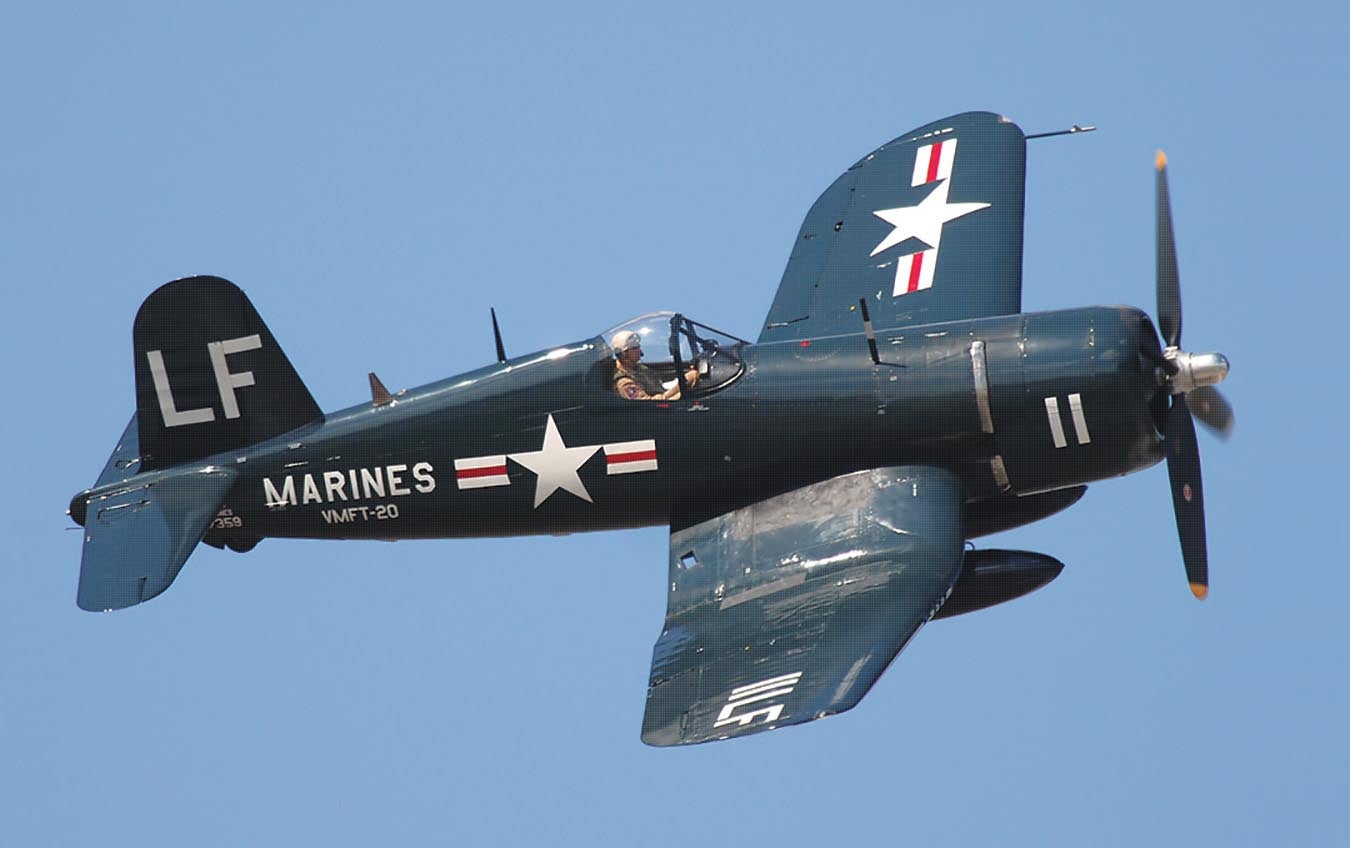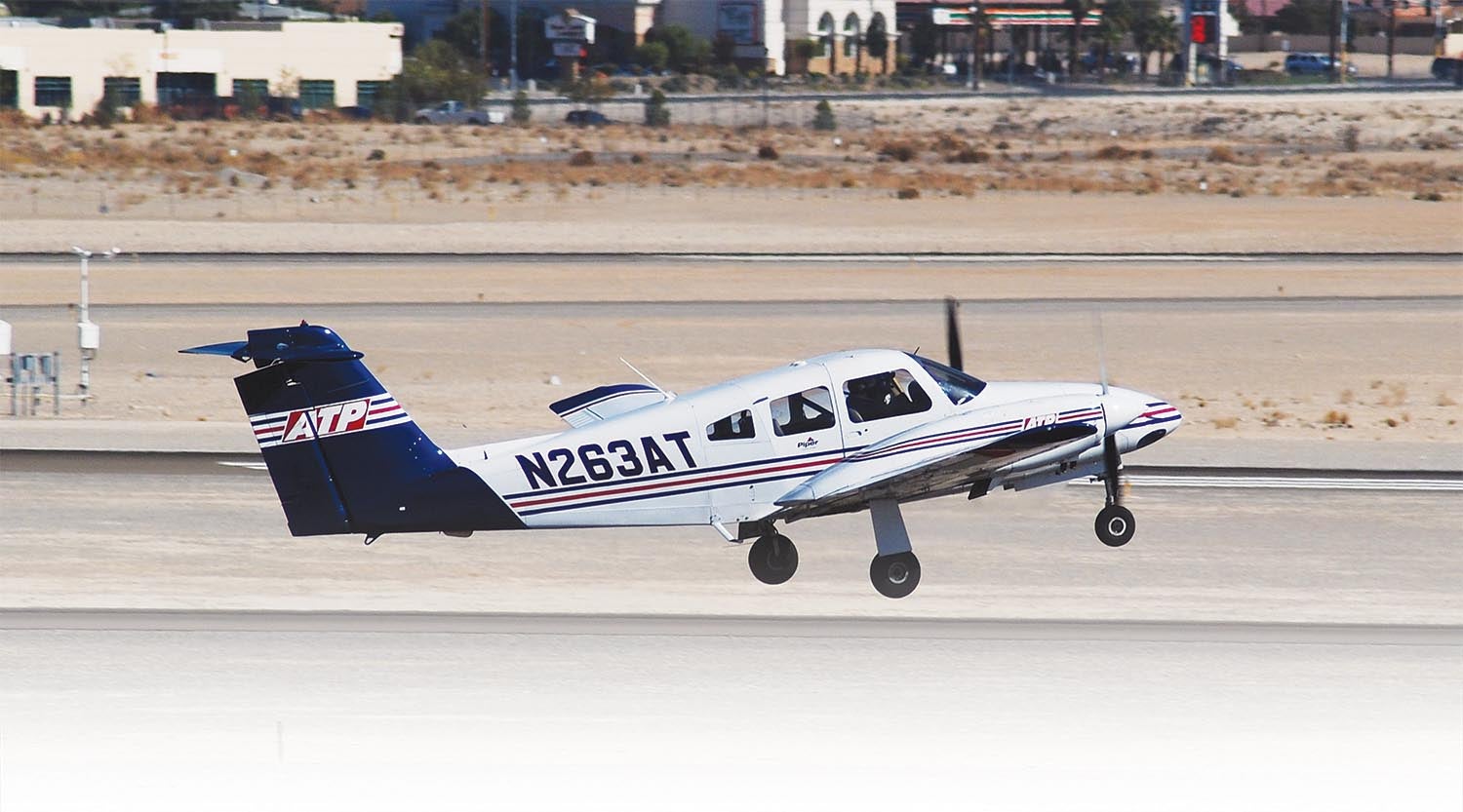We’ve touched on this during previous discussions of slipstream (most recently in the April 2023 issue), but there are several power and propeller effects that influence the lateral/directional behavior of the airplane. The torque of the engine produces a pure rolling moment on the airplane, while P-factor produces yawing moments. Let’s take a closer look at both, beginning with torque.
Torque
The engine exerts torque on a shaft to turn the prop. There is an equal and opposite torque reacted through the engine mounts into the airframe. This torque tends to rotate the airplane in the direction opposite to the rotation of the propeller.
Torque reaction is a major consideration in the design of helicopters, where the shaft is oriented vertically to drive the rotor. Most helicopters use a tail rotor that pushes sideways on the end of the tail boom to counteract the torque driving the main rotor. Without the tail rotor, the body of the helicopter would spin opposite to the rotation of the main rotor.
The torque of the engine produces a pure rolling moment on the airplane, unlike P-factor, which produces yawing moments. Aerodynamic rolling moments generated by the wings and ailerons oppose the rolling moment due to engine torque.
Torque is most significant at high power and low airspeed. The torque of the engine, and hence the rolling moment it exerts on the airplane, is at its highest at maximum throttle. The ability of the airframe to generate aerodynamic force is proportional to airspeed squared, so the ailerons have the least power to fight engine torque at low airspeed.
Two flight conditions where this is the case are right at liftoff, with the engine at full power to start the climb, and at the beginning of a missed approach, when the pilot applies full power to stop the descent and start climbing again.
For most general aviation airplanes, the rolling moment due to engine torque is small enough relative to the control power of the ailerons that it is easy to control. If the airplane has a single engine and is very powerful, the picture changes. Some WW-II fighters had so much torque that the ailerons could not overcome the torque if the pilot abruptly applied full power at low airspeed. The F4U Corsair was particularly susceptible to this because it was a Navy fighter that could fly slowly enough to land on the aircraft carriers of the period, but also had a very powerful engine to give it the top speed and high rate of climb it needed to be an effective fighter and interceptor. If the pilot slammed the throttle forward suddenly to initiate a wave-off, the airplane would roll uncontrollably. This caused more than one accident in service, and the problem persisted when civilians who were used to lower-powered airplanes started flying surplus fighters after WW-II.

The problem of torque causing difficulties with roll control reappeared when people started to install turbine engines on some composite kit airplanes originally designed around piston engines. Turbines with 400 to 500 hp were installed, replacing 160- to 200-hp piston engines. There were several accidents with these early turbine conversions where the airplane lifted off at full power and the pilot was unable to keep the airplane from rolling with the engine torque after liftoff.
In these high-powered singles, the correct technique is to realize that they might have a minimum control speed (Vmc) below which its only safe to use partial power. The airplane can still fly and climb at airspeed below this because the engine has so much excess power that even at part throttle it provides enough power to climb, but it is unsafe to use full power until the airspeed is above the critical speed.
It’s important to note that the fact that torque is so significant on high-powered airplanes does not mean that P-factor is not. P-factor rises with increasing power also, so in addition to the pure rolling moment caused by torque, the pilot must still contend with the yawing moment due to P-factor.
More About P-factor
One component of P-factor is the yawing moment induced by the propeller. The slipstream spirals around the fuselage and generates an angle of attack on the vertical fin. This causes the fin to generate side force that pushes on the tail, causing a yawing moment. This phenomenon occurs on single-engine airplanes and is a direct function of power and airspeed. The yawing moment comes from the effect of the slipstream on the airframe, not directly from the propeller itself.
There is a second component of P-factor that can cause the propeller to directly exert a yawing moment on the airframe. This component is a function of both power and angle of attack. It’s caused by how the thrust of a propeller blade varies as a function of where in the rotation it is.
At zero angle of attack the propeller shaft is parallel to the airstream. A propeller blade that is in the part of the rotation where it is moving upward sees the same blade angle of attack and airspeed as a blade that is in the part of the rotation where it is moving downward.
Placing the airplane at a positive angle of attack tilts the prop axis relative to the wind. Now the blades see different conditions as they move around the propeller orbit. An up-going blade sees a lower blade AoA and airspeed than if the shaft were parallel to the wind. Conversely, a down-going blade sees higher blade AoA and airspeed.
Because of this asymmetry in blade angle of attack and airspeed, an up-going blade generates less thrust than a down-going blade. This moves the centroid of the thrust of the propeller laterally from the axis of rotation toward the down-going blade. If the prop is on the airplane’s centerline, this thrust offset generates yaw in the direction of prop rotation, toward the down-going blade. This effect gets more pronounced as angle of attack increases, so it will be at its maximum when the airplane is flying at minimum airspeed and maximum power.
This component of P-factor is responsible for the “critical engine” phenomenon on twin-engine airplanes. If an engine rotates so the down-going blade is outboard of the shaft, this shifts the thrust outboard. If an engine rotates so the up-going blade is outboard of the shaft, this shifts the thrust inboard. If both engines rotate the same way, the one with the down-going blade outboard will make more yaw because its thrust is further outboard of the center of gravity. This makes the other engine, with the down-going blade inboard, the “critical engine.” If it fails, the opposite-side engine with the down-going blade outboard makes more yaw because of thrust offset. The airplane will have a higher Vmc if the “critical engine” fails than if the other engine fails.

The cure for this is to arrange for the propellers of the two engines to rotate in opposite directions (counter-rotate) so that the down-going blade is inboard on both sides.
High-powered multi-engine airplanes like WW-II bombers, twin-engine fighters and piston- or turbine-engine airliners typically have propellers driven by reduction gearboxes. Different gear sets were used to drive left-hand-rotating and right-hand-rotating propellers so the airplane could have counter-rotating propellers.
Many general aviation twin-engine airplanes have direct-drive engines with no gearbox. As light twins appeared, they typically had engines that rotated the same way, giving them a critical engine. This was enough of a concern that Lycoming eventually developed and offered direct-drive engines with reverse rotation. Once these engines appeared, an airplane could have counter-rotating props without gearboxes by using a left-hand-rotation engine on one wing and a right-hand-rotation engine on the other. The Piper Seminole and Twin Comanche CR are examples of this.














That article was very interesting even though I’m not a pilot,.Thanks
Maximum torque is not always at maximum throttle. If by maximum throttle, maximum power is meant. Maximum power is generally produced on the backside of the torque curve.
My Cessna 175B has a GO-300 Continental. so the engine run backward , ccw from th epilot seat, in order to have the prop rotate cw.
2 things; the tach also runs up ccw, which surprises some pilots, and the gearbox increases the torque to 400 ft-lb into the 84 inch prop, causes a lot of P-factor for a 175 HP engine.
BTW, the GO-300 torque curve is flat from 2,500 to the 3,200 rpm redline, at 300 ft-lb.!